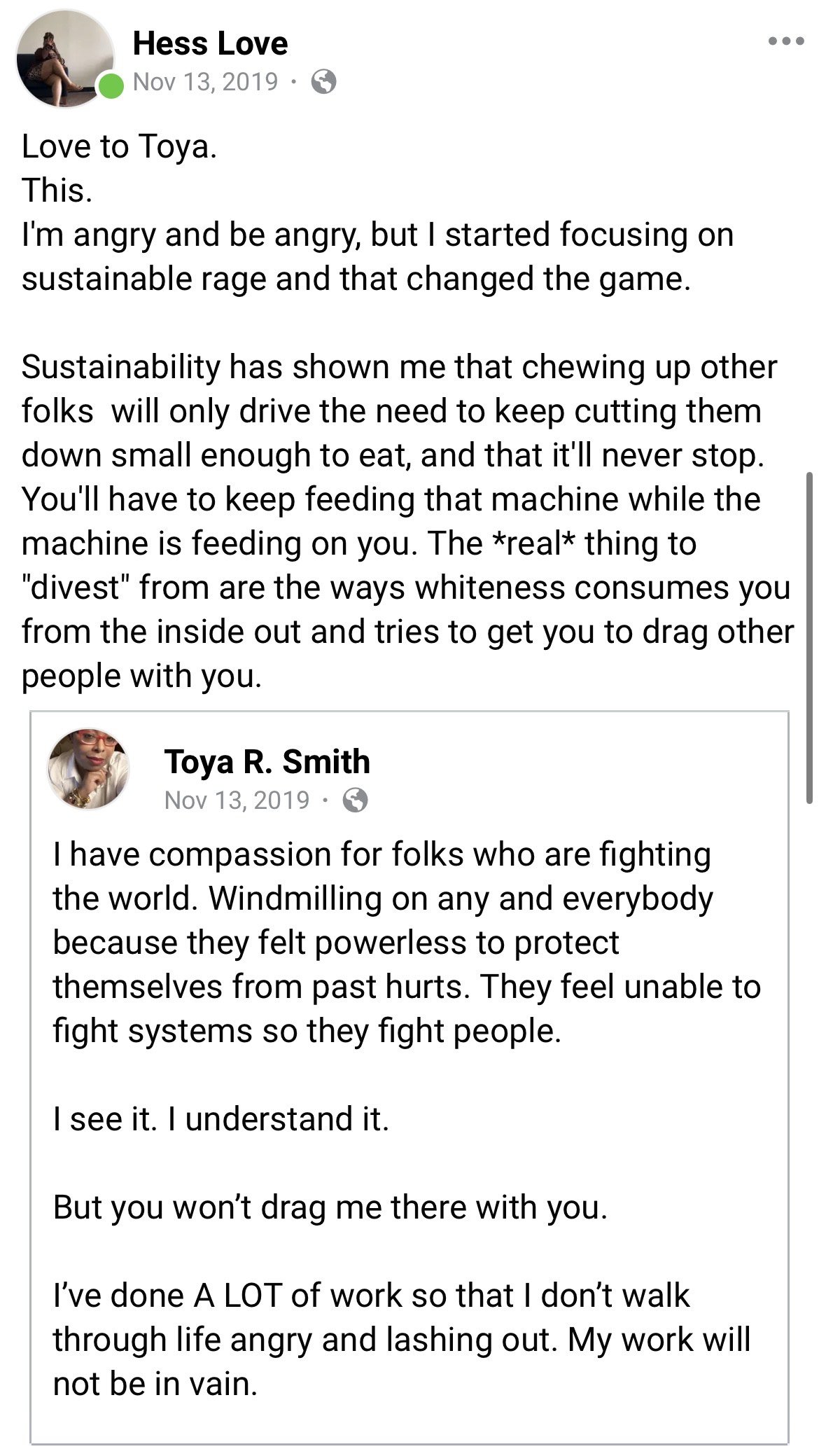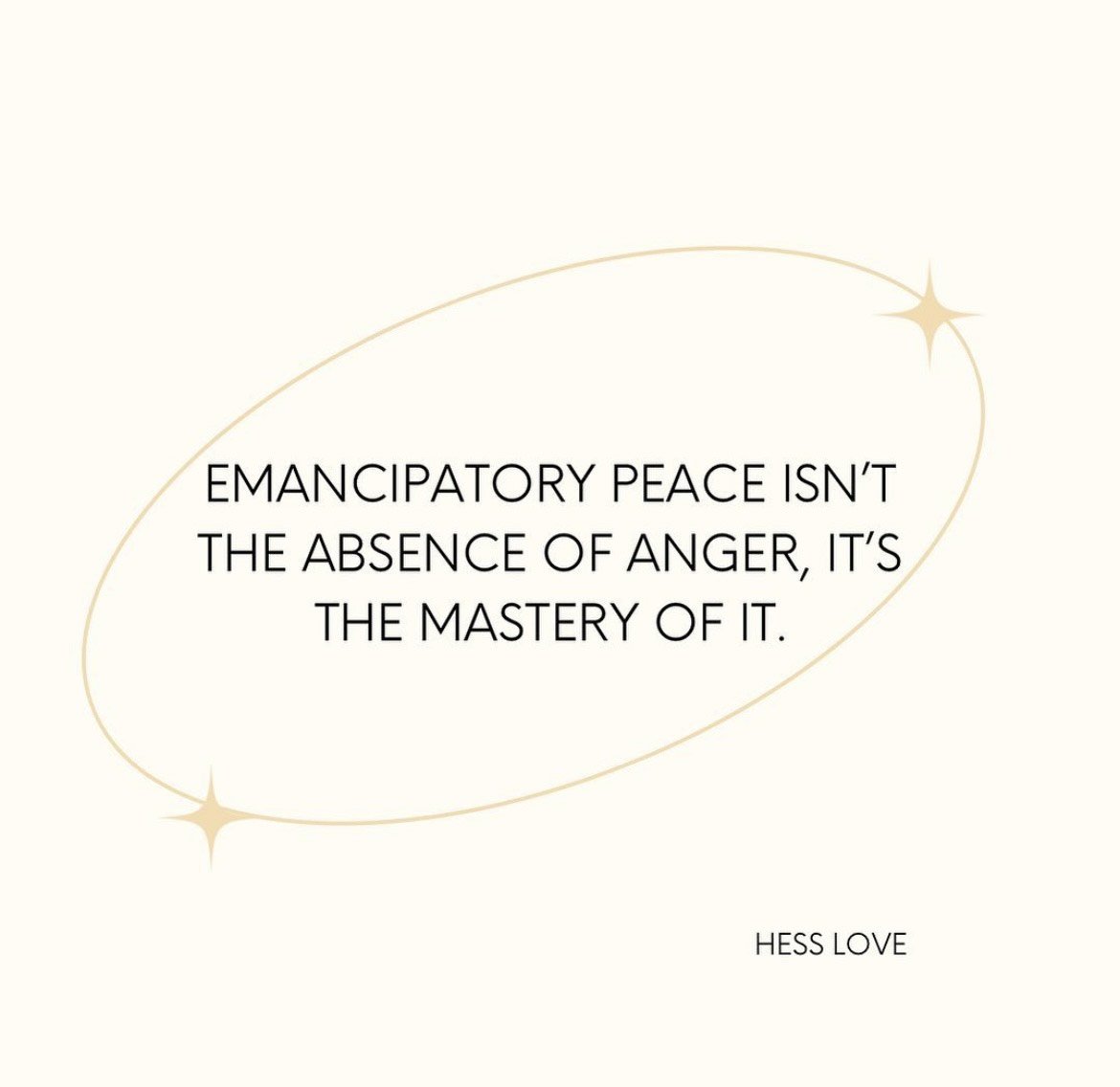
MAD AS HELL:
Creating A Field Guide for Sustainable Rage
WRITING WORKSHOP
Primary Definitions of "Rage" (as a noun):
Intense anger
A feeling of violent, uncontrollable anger.
Example: He was shaking with rage after the argument.
A fit of violent anger
A sudden burst or outburst of anger.
Example: She flew into a rage when she saw the mess.
A widespread enthusiasm or fad (informal usage)
Something currently popular or fashionable.
Example: Crochet clothes are all the rage this season.
As a verb (to rage):
To feel or express violent anger
To speak or act in a furious or violent way.
Example: He raged at the unfairness of it all.
To continue with great force or intensity
Often used for storms, fires, wars, etc.
Example: The storm raged through the night.
To spread rapidly or destructively
Often used metaphorically.
Example: A debate raged across social media.
Etymology of "Rage":
Middle English: rage
From Old French: rage
From Medieval Latin: rabia (meaning “madness, fury”), which also gave rise to the word rabies
From Latin: rabere, meaning “to rave, be mad”
Origins of "Rage"
Middle English: The term rage appeared around the 13th century, denoting meanings such as "madness," "insanity," and "a fit of frenzy." It also encompassed "rashness," "foolhardiness," and intense or violent emotions like anger and wrath.
Old French: From the 11th century, rage (also spelled raige) meant "spirit," "passion," "rage," "fury," or "madness."
Medieval Latin: The word derived from rabia, which meant "madness" or "fury."
Latin: The root is rabies, meaning "madness" or "fury," which is related to rabere, meaning "to be mad" or "to rave."
Proto-Indo-European: Some sources suggest a connection to the PIE root rebh-, meaning "violent" or "impetuous," though this is considered uncertain by some linguists.
Evolution of Meaning
Over time, rage has expanded in its usage:
14th–16th centuries: In Middle English, it could also mean "rabies" or a "fit of carnal lust or sexual desire."
Modern English: The term has retained its primary meanings related to intense anger and fury.
Why Sustainable Rage?
Where did this curiosity come from?
“I find it plausible that the rage itself is sustainable.” Adam Moss
The earliest, self-initiated field note featuring the term "sustainable rage" that I can find ( after crawling through both my social media pages and Apple notes) are from 2019, and then again in 2021. Who is to say what’s in my stack of notebooks.
Though I don’t recall hearing the term “sustainable rage” before, an article on Occupy Wall Street from 2011 is one of the first and few references to it byway of google search. Interestingly, it’s tied to activism, something that aligns with my own idea of sustainable rage, at least in part. It brings to mind James Baldwin’s quote: “To be a Negro in this country and to be relatively conscious is to be in a rage almost all the time..” Somewhere, in the wake of context that fueled Baldwin’s words and everything that was Occupy Wall Street, we find ourselves here, opening the door to a field guide on sustainable rage, together.
While I personally navigate sustainable rage as a ritual straddling both the public and private realms (while emphasizing the interiority of it), the bedrock of sustainable rage relies on a communal sharing of the emotion, the phenomenon, the action. A sharing of the passion/possession of rage isn’t exclusive to/with humans. I learned this after spending summer ‘22 in an Appalachian forest. I was wounded. I was mad as hell. Over the mountains and through the woods I met so many things, including myself. We all screamed and held each other tight. It was an initiation in its own right.
I hope to start for you what the raptors and the deer and the ghosts and the trees and the bones started for me.
May this workshop be a launching pad. In the moments that we will share together I won’t be a teacher, more of an intentionally placed homie with a map and specific instructions for gathering folk, convening us all. Think less “sage on the stage” and more “guide alongside.”
Your rage is yours. Our rage is ours. And the answers are in you and in us, collectively.



Are you ready? Let’s begin.
Here’s what you need to do to get yourself grounded and ready for the work:
First, check your details. Make sure you know which workshop you’re attending: Online, April 27 or In Person, May 8. Find your welcome email, it has everything you need: the link, the location, the time. Don’t skip this step!
Now, get something to write with. Pen and paper, or whatever you use to take notes. You’ll want a place to put your thoughts, your questions, your truths. I want you to write—right now.
Take a moment. Think back to your application (don’t look at it, just remember) and answer these questions:
What did you say?
What did you feel when you were writing it?
Write down five things you remember.
Did anything surprise you about what you shared?
What felt most true?
This will be part of our intro into the space.
Now, read through the space agreements (below this section). Sit with them. Let them settle in your body. They will be repeated during workshop for emphasis.
Gather the materials you need: pen and paper (or something you can write on—you’ll NEED this). Optional: Scissors, glue, glitter, crayons, old magazines, play doh, macaroni noodles, 1lb-bag-of-dried-beans-that-has-been-taking-up-real estate-in-the-pantry-for-over-a-year, books, water, your favorite hoodie, something to ground you.
You’ll be writing!
You’ll be recording!
You’ll be witnessing!
During workshop you may feel the urge to create something, draw/rip/tear/glue something, paint, etc. You may even feel the urge to dance. Use what you have and don’t over think it. You know what you need.
Next, choose your own entry point. Pick a text or a piece of media to read or witness before we gather (listed below the space agreements). You don’t need to go through everything. Read over each section then start with the one that pulls at you the most. The one that speaks your name a little louder than the rest. Sit with it for an hour (for short form works either sit with the same material for an hour or engage in other short-form works that call to you). Let it work on you.
And one more time: gather your supplies! You’ll want them close by for the workshop. Make sure you eat before hand! Don’t bring yourself to this workshop hungry—that’s not sustainable.
A quick note: the workshop will be recorded, but it won’t be shared. I’ll be revisiting the footage to reflect on my own facilitation, how the space moved, what needs smoothing out, work out what was phenomenal, witness once again how dope y’all are, etc.
We’re in this together. For a few hours anyway.
Space Agreements
What Happens Here, Stays Here
This space is built on trust. What is shared here stays here.
Show Up For Real
Don’t just be here in body. Be here in spirit, in mind, and in heart. Engage with sincerity and respect. Listen with intent. Speak with purpose. Give yourself consent to enter the space, and give others consent to engage with you.Respect the Boundaries of Others
Don’t make anyone feel small or unseen (including yourself). Your words and actions should never push someone into discomfort. If you feel that shift, check yourself.Listen to Your Body, Honor Your Limits
Your body will tell you what you need. If something becomes too heavy, step away. Don’t force yourself to go through something that’s too much. Your well-being is more important than any moment here.Speak Your Truth, With Love
When you speak, speak from your own experience, not as the final word. Use “I” statements. We are all figuring things out together, and no one truth is more valuable than another.Leave No Room for Hate
This is a space where hate has no place. No antiblackness, no transphobia, no ableism, no ageism, no misogyny, no homophobia, or any of their relatives. None of it!We’re Here to Lift Each Other
This is a space for growth, for understanding, for healing. Be encouraging. If you’re not here to support, step aside. We’re building something that should empower, not tear down.Honor Time, Honor Space
Speak, but don’t dominate. Give room for others to breathe, to speak, to share.Assume Good Intent
We’re all learning, stumbling, trying to figure it out. If something doesn’t sit right, approach it with curiosity, not judgment. We’re all here to grow, not to tear each other down. This space is built on the foundation of love and respect, not perfection.Reflect and Be Open
This is not a place for surface-level conversation. Be open to being challenged, to stretching your mind, to listening more deeply. What you put in is what you’ll get out of it. The answers aren’t only in you, they’re in all of us.Honor Your Responsibility to Care for Yourself
This is not a therapeutic space or a substitution for one-on-one therapy, group therapy, divinations, etc. It’s not an anger management class. You will not leave with all of the answers, know how to lean into that.
“goodness gracious, I might give a fuck on a rare occasion.” Rico Nasty - Rage
Remember, the following list of selected readings and witnessing should be engaged “choose your own adventure” style. Pick one, or a few. Make sure to take notes!
-

Long Form
Take some time to immerse yourself in a chapter (or even several) of a long-form exploration on the theme of rage, whether it's from a work of fiction or nonfiction. Let yourself really sit with the material, feel it, and reflect on how the author navigates and expresses this powerful emotion. If the book resonates with you in any way, I strongly encourage you to consider purchasing a copy to support the author, or borrowing it from your local library (try the libby app for e-books and audiobooks through your local library, to purchase try bookshop.org for print and e-book or libro.fm for audiobooks) so you can engage the text in depth. Read as much as the google book preview will allow. Don’t over think, just pick. Trust your instincts, if it calls to you allow yourself to be seduced.
How to Go Mad Without Losing Your Mind
Love and Rage: The Path of Liberation through Anger
-

Sprints
Take a little time to read an essay or a play that explores the feeling of rage. Whether it’s a personal account, a cultural critique, or a moment on stage filled with tension, notice how the writer channels that anger, how it’s shaped, expressed, and what it reveals. If you read a play and it clicks with you, I truly encourage you to get your hands on the full piece! Buy it if you’re able, or check it out from the library. Below is a list to choose from, go with whatever draws you in.
Eye to Eye: Black Women, Hatred, and Anger
The Transformation of Silence Into Action
-

Visuals: Poems and Videos
Take the full hour still, to sit with a poem or a video that digs into rage. Some of these are quick hits, just a few lines that land hard. Others are longer, deeper dives that ask for your full attention. However long it takes, notice how the emotion shows up, how it builds, breaks, simmers. If something really gets under your skin (in a good way), follow that thread. Look up more from the creator, watch or read the full piece. Here’s a list to explore, start with whatever pulls at you.
How to Build an Ancestral Altar